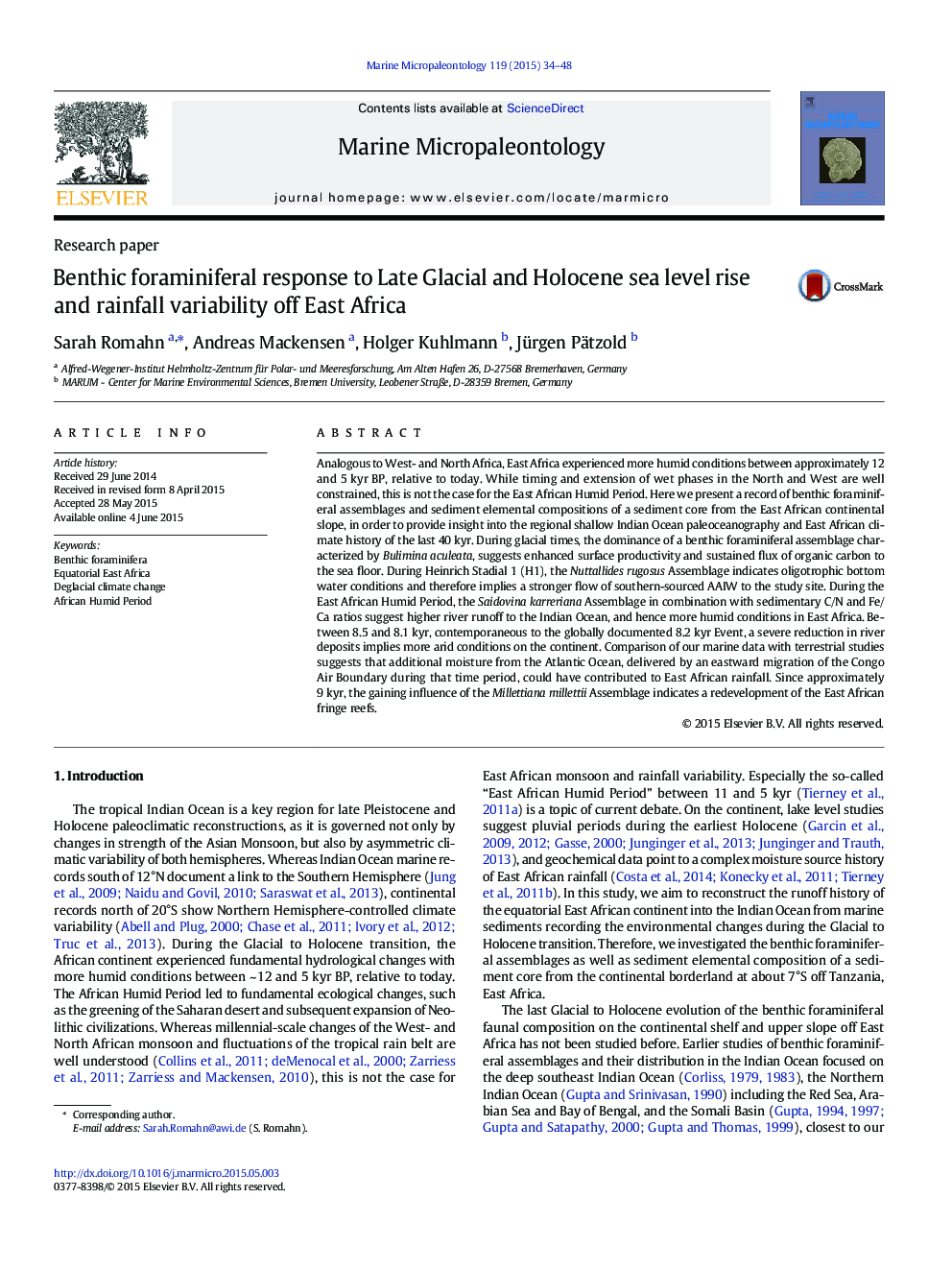| Article ID | Journal | Published Year | Pages | File Type |
|---|---|---|---|---|
| 4748810 | Marine Micropaleontology | 2015 | 15 Pages |
•Benthic foraminiferal assemblages and sediment elemental compositions from the East African continental slope are presented•Stronger flow of southern-sourced AAIWto the study site during Heinrich Stadial 1•Higher river runoff to the Indian Ocean, and hence more humid conditions in East Africa during the East African Humid Period•Severe reduction in river runoff and hence arid conditions in East Africa between 8.5 and 8.1 kyr•Redevelopment of the East African fringe reefs since 9 kyr
Analogous to West- and North Africa, East Africa experienced more humid conditions between approximately 12 and 5 kyr BP, relative to today. While timing and extension of wet phases in the North and West are well constrained, this is not the case for the East African Humid Period. Here we present a record of benthic foraminiferal assemblages and sediment elemental compositions of a sediment core from the East African continental slope, in order to provide insight into the regional shallow Indian Ocean paleoceanography and East African climate history of the last 40 kyr. During glacial times, the dominance of a benthic foraminiferal assemblage characterized by Bulimina aculeata, suggests enhanced surface productivity and sustained flux of organic carbon to the sea floor. During Heinrich Stadial 1 (H1), the Nuttallides rugosus Assemblage indicates oligotrophic bottom water conditions and therefore implies a stronger flow of southern-sourced AAIW to the study site. During the East African Humid Period, the Saidovina karreriana Assemblage in combination with sedimentary C/N and Fe/Ca ratios suggest higher river runoff to the Indian Ocean, and hence more humid conditions in East Africa. Between 8.5 and 8.1 kyr, contemporaneous to the globally documented 8.2 kyr Event, a severe reduction in river deposits implies more arid conditions on the continent. Comparison of our marine data with terrestrial studies suggests that additional moisture from the Atlantic Ocean, delivered by an eastward migration of the Congo Air Boundary during that time period, could have contributed to East African rainfall. Since approximately 9 kyr, the gaining influence of the Millettiana millettii Assemblage indicates a redevelopment of the East African fringe reefs.
